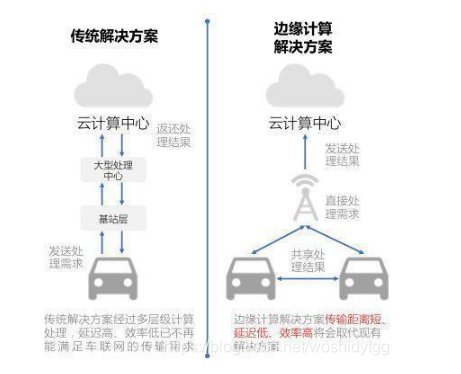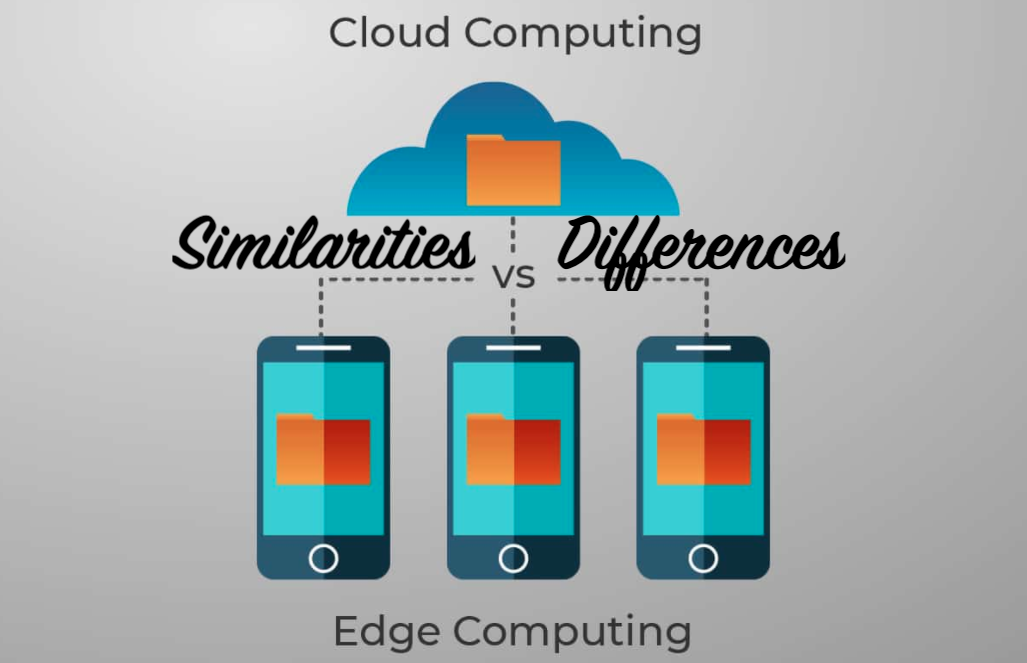Edge computing actually belongs to a kind of distributed computing, which utilizes the completed computing program brought by the edge close to the data source without uploading a large amount of data to the cloud. The operation of edge computing can be completed in large computing equipment, small and medium computing equipment, and local network. The devices used for edge computing can be mobile devices such as smart phones, PCs, smart homes and other household terminals, or ATM machines, cameras and other terminals.
About the application status and scenarios of edge computing
At the Microsoft Build 2017 developer conference, Microsoft CEO Satya Nadella announced: “The company’s cloud strategy is moving in the direction of edge computing.” In the future, with the multiplication of networked access devices and the explosive growth of data in the era of big data, Cloud computing centers have been unable to meet the high requirements for low latency in scenarios such as smart homes and unmanned driving. The replacement of edge computing will become a general trend. Now lets look at the scenarios of edge computing application.
1: Internet of Things with Internet of Everything
With the rapid increase of network edge devices, the data inventory generated by the devices has reached the level of zettabytes. The transmission of massive data from the network edge devices to the cloud data center has caused the network transmission broadband load to increase sharply and cause long network delays. Mere cloud computing is no longer sufficient to match such a huge amount of real-time computing.
As the “brain center” of the Internet of Things (IoT), cloud computing stores, processes, organizes, and analyzes a large amount of data that cannot be processed by edge computing. Data processing in edge devices or edge servers can also ease the pressure on cloud data centers. Edge computing and cloud computing cooperate with each other. To be precise, they are mutually optimized and complementary.
2: CDN content distribution business
Traditional CDNs use cached data to improve the performance of near-Earth node data transmission, but in reality, dynamic computing services can only be returned to the data center. This cost itself is actually very high. Edge computing is different from traditional centralized thinking. Its main computing nodes and applications are distributed in the data center close to the terminal, which makes it higher than traditional centralized cloud computing in terms of service response performance and reliability. Edge computing guarantees that a large number of calculations need to be completed in an area very close to the terminal to complete the demanding low-latency service response.
In addition, edge computing also alleviates traditional data “security” problems. After all, the farther the data transmission distance, the longer the path, and the longer the time, the higher the risk of data theft and loss.
Trending Articles for this week
- 2021 Edge Computing Forecast, Trends & Market Size
- Edge Computing, Cloud Computing & Fog Computing
- Talking about MEC Mobile Edge Computing
- Top Ten Digital Transformation Trends in 2021: 5G, Artificial Intelligence, Telecommuting…
3: The booming Internet of Vehicles
At present, with the vigorous development of new forces such as intelligent driving and autonomous driving, the number of connected cars is increasing, and there are more and more functions for Internet of Vehicles users. As a result, the amount of data transmission of Internet of Vehicles continues to increase. The demand for delay/delay is becoming more and more demanding, especially when the car is driving at high speed, the communication delay should be within a few milliseconds, and the reliability of the network is crucial to safe driving.
So, how to meet the high transmission rate requirements of the Internet of Vehicles in this process? Traditional central cloud computing has high latency and low efficiency due to multi-level computing and processing. Now it can no longer meet the transmission needs of the Internet of Vehicles. Based on edge computing solutions, data filtering, screening, analysis and processing have been completed at the near-point edge layer, with short transmission distance, low latency and higher efficiency. Compared with cloud computing, the Internet of Vehicles obviously needs edge computing to escort!

- (1) Through the method of “sinking” the node, the calculation can be performed at the base station closest to the vehicle, and the distance can be calculated in a short time.
- (2) In-vehicle edge computing can provide real-time vehicle location in real time, using low-latency effects and nearby base stations to improve reliability.
- (3) A single vehicle volume is concluded after data analysis, and it is transmitted to other connected vehicles in the adjacent area with extremely low delay. The transmission can be completed quickly within the area, and the driver can make timely decisions.
4: Smart City Cloud Brain
As mentioned at the beginning, we compare edge computing to “nervous endings”, and at the same time, we now call the smart city construction architecture based on the Internet cloud brain model “urban cloud brain” or “urban brain”, the role of edge computing here It is like the nerve endings of the urban brain. On the one hand, it collects data and information, performs real-time processing and prediction locally, and transmits the feature data extracted by local processing to the cloud brain. On the other hand, it combines artificial intelligence with sensors distributed in the city to get through Various system platforms enable many problems in urban operations to be discovered and dealt with in a more timely and effective manner!

The application scenarios of edge computing are far more than those listed above. In the future, edge computing will also bring us different degrees of surprises in scenarios such as smart security, smart home, virtual reality, blockchain, and remote monitoring.
Cloud Computing and Edge Computing:
In essence, both are computing operations for processing big data, and they are complementary to each other. The only difference between edge computing and cloud computing is that data does not need to be transmitted to remote clouds and can be resolved at the edge. Edge computing is more suitable for real-time data analysis and intelligent processing, and is more efficient and safe. If cloud computing is a centralized big data processing, then edge computing can be understood as edge big data processing!
Cloud computing focuses on the “cloud“, while edge computing focuses on the ” end “. Specifically, edge computing is the implementation of data processing, application operation, and even some functional services, from the central server to nodes on the edge of the network.
Edge computing is a technology that optimizes applications or cloud computing systems. It transfers certain parts of application data or services from one or more central nodes (“cloud”) to another logical endpoint (“edge”) .
For example, self-driving vehicles, implantable medical devices, other Internet of Things (IoT) fields and mobile devices, by performing analysis and knowledge generation at the edge, reduce the communication bandwidth between the control system and the central data center. Simply put, it is to place the computer program that requires low latency closer to the request, thereby reducing transmission costs, shortening the delay and improving the quality of service (QoS) .
What are the advantages of edge computing:
Advantage 1: Data Processing
Real-time edge computing enables networked devices to process data formed at the “edge”. Recently, “autonomous driving” has also set off a heat wave. In fact, the self-driving car itself is a high-performance computer, which requires a large number of sensors to collect data.
In order to operate safely and reliably, it needs to react immediately to the surrounding environment, and any delay in processing speed may be fatal. With cloud computing, although data processing is mainly performed in the cloud, it may take several seconds to transmit data back and forth between central servers.
The time span of data transmission is too long. Edge computing has its place under the demand of “real-time computing”. It makes it possible for autonomous vehicles to process data faster on the vehicle side, without the need to transfer data back and forth between the vehicle and the cloud.
Advantage 2: Edge Node Data Processing
There are a large number of functions in the intelligent network that can be directly processed at the edge node. The person in charge of a department like your company does not need to report everything to you. They can directly express their ideas, make plans, and achieve goals.
Some functions of the traditional architecture need to be processed by the central server, but now they can be processed directly at the edge and return the corresponding results. For example: authentication, log filtering, data integration, image processing and TLS (HTTPS) session settings, etc.
Advantage 3: Data aggregation.
A physical device often produces a large amount of data. It can be filtered at the edge and then aggregated to the center for processing. This is all using the computing power of the edge. Let’s use that story as an example.
When the heads of the various departments of the company are always undecided, they will summarize the problems and difficulties faced by their departments and report them to you, so you can see that what they have compiled is very intuitive. The data. This is also one of the advantages of edge computing.







